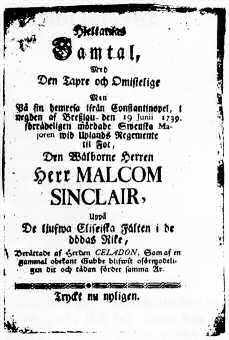| Music in Sweden 2 - Folk music | |||
|
|
|||
|
Song (1) |
|
||
|
Song Various kinds of songs constitute the most common type of Swedish folk music. Strictly speaking a distinction is made between secular song ("visa") and religious song ("sång"), but the common ground is extensive. Worldly texts have been sung to hymn melodies and the melodies of worldly songs furnished with religious texts. In many cases the melodies have altered in their new environment. Songs were used at work and at play, normally without instrumental accompaniment. During the past 100 years the zither, the guitar, various kinds of accordion and other instruments have been used in accompanying songs. The winter evenings are in Sweden very long and for the most part very cold. Songs were often used to accompany the activities of the evening: carding, spinning, sewing, repairs and tool-making. These songs could be long and dramatic, telling of love and sudden death. The texts of certain songs - the 'ballads' - had been sung since the Middle Ages, and only a few traditional singers who can sing such ballads are alive today. Shorter songs were also sung, often songs of jest where the targets were priests and other persons in authority. Religious songs and psalms could also be sung.  Broadside
"Skillingtryck". Broadside
"Skillingtryck". Photo: Kungl biblioteket. Many songs were learned from broadsheets ("skillingtryck") - small, usually eight-sided booklets containing the words to 3 or 4 songs. These booklets were sold at markets and other folk-gatherings by wandering singers who sung their "songs for sale". The oldest known broadsheet with songs in Swedish was printed in 1583 and broadsheets were still being printed around 1910. The contents of the broadsheets varied greatly: the songs of the 17th century were mostly religious whilst the increased ability to read on the part of the general public led to an increased demand for songs with worldly tales in the 18th and 19th centuries. The broadsheet songs were learned by heart and wandered from mouth to mouth as a part of the folk tradition. Certain melodies were extremely popular and were used for numerous different texts. One such melody was the well-known 'La Folia' or 'Folie d'Espagne', another the 'fiskeskär' melody ('fiske' = 'fish'; 'skär' = 'rocky islet', 'skerry') which is still used in Swedish homes as a cradle song. The traditional way of singing, in spite of the often dramatic contents, is in no way dramatic: the songs are sung verse after verse without the use of stress or gestures to emphasise the contents of the text. |
|
Song (1) |
|
|
|
|
|
|||
| Music in Sweden 2 - Folk music | |||